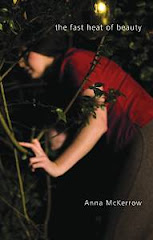Two other books helped inspire Taropoetics, my experimental poetry project. They were Margaret Atwood's novel Lady Oracle - an interesting essay about it here - and Philip K Dick's The Man in the High Castle. The former uses the idea of automatic writing to create poetry, and the latter uses the I Ching as a storytelling device in a story-within-a-story:
Dick used the philosophic I Ching (Book of Changes) to determine the plot particulars of The Man in the High Castle, explaining:
"I started with nothing but the name, Mister Tagomi, written on a scrap of paper, no other notes. I had been reading a lot of Oriental philosophy, reading a lot of Zen Buddhism, reading the I Ching. That was the Marin County zeitgeist, at that point; Zen Buddhism and the I Ching. I just started right out and kept on trucking."[4] In the event, he blamed the I Ching for plot incidents he disliked: "When it came to close down the novel, the I Ching had no more to say. So, there's no real ending on it. I like to regard it as an open ending".
The I Ching is prominent in The Man in the High Castle; having diffused it as part of their cultural hegemony overlordship of the Pacific Coast U.S., the Japanese — and some American — characters consult it, and then act per its replies to their queries. Specifically, "The Man in the High Castle", Hawthorne Abendsen, himself, used it to write The Grasshopper Lies Heavy, and, at story's end, in his presence, Juliana Frink, queries the I Ching: "Why did it write The Grasshopper Lies Heavy?" and "What is the reader to learn from the novel?" The I Ching replies with Hexagram 61 ([中孚] zhōng fú) Chung Fu, "Inner Truth", describing the true state of the world—every character in The Man in the High Castle is living a false reality.
I wondered whether Atwood's reference to automatic writing, albeit in a slightly comedic novel, pointed to Hannah Weiner's Clairvoyant Journal. This is an avant-garde text which the writer "received" over a number of months. (Another very interesting essay on Weiner available as a PDF here).
In the early 1970s, Weiner began writing a series of journals that were partly the result of her experiments with automatic writing and partly a result of her schizophrenia. She influenced a number of the language poets and was included in the In the American Tree anthology of Language poetry (edited by Ron Silliman). Beginning with Little Books/Indians (1980) and Spoke (1984) Weiner's work engaged with Native American politics, particularly the American Indian Movement and the case of imprisoned activist Leonard Peltier.[4][5]
Interest in Weiner continues into the 21st century with the recent publication of Hannah Weiner’s Open House (2007), "a representative selection spanning her decades of poetic output" [6] This volume was edited by Patrick F. Durgin, who provides an overview of Weiner's art:
“
Hannah Weiner’s influence extends from the sixties New York avant-garde, where she was part of an unprecedented confluence of poets, performance and visual artists including Phillip Glass, Andy Warhol, Carolee Schneemann, John Perrault, David Antin, and Bernadette Mayer. Like fellow-traveler Jackson Mac Low, she became an important part of the Language poetry of the 70s and 80s, and her influence can be seen today in the so-called "New Narrative" work stemming from the San Francisco Bay Area. With other posthumous publications of late, her work is being discussed by scholars in feminist studies, poetics, and disability studies. But there does not yet exist a representative selection spanning her decades of poetic output. Hannah Weiner’s Open House aims to remedy this with previously uncollected (and mostly never-published) work, including performance texts, early New York School influenced lyric poems, odes and remembrances to / of Mac Low and Ted Berrigan, and later “clair-style” works.
Saturday, 28 January 2012
Subscribe to:
Post Comments (Atom)






No comments:
Post a Comment